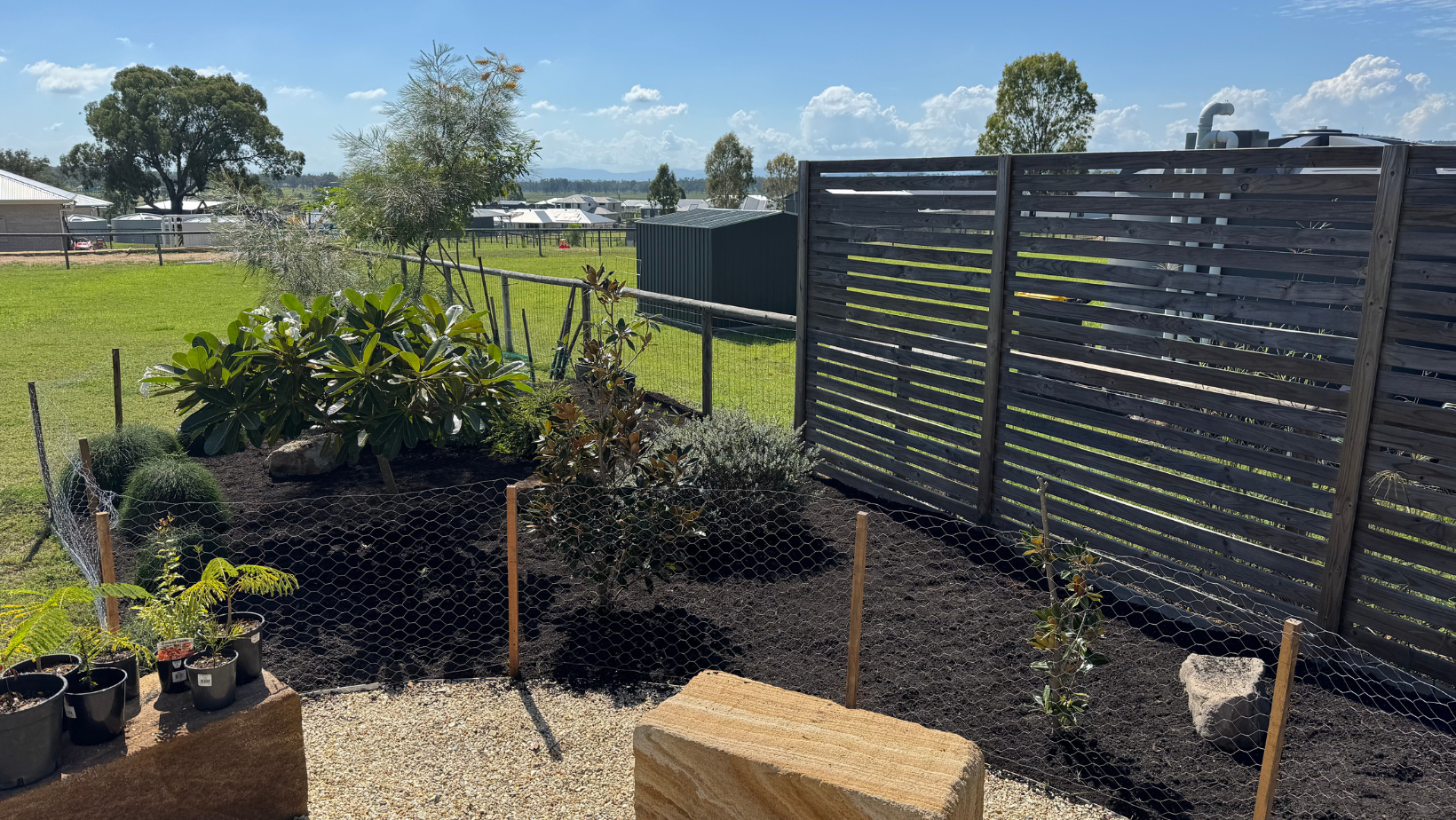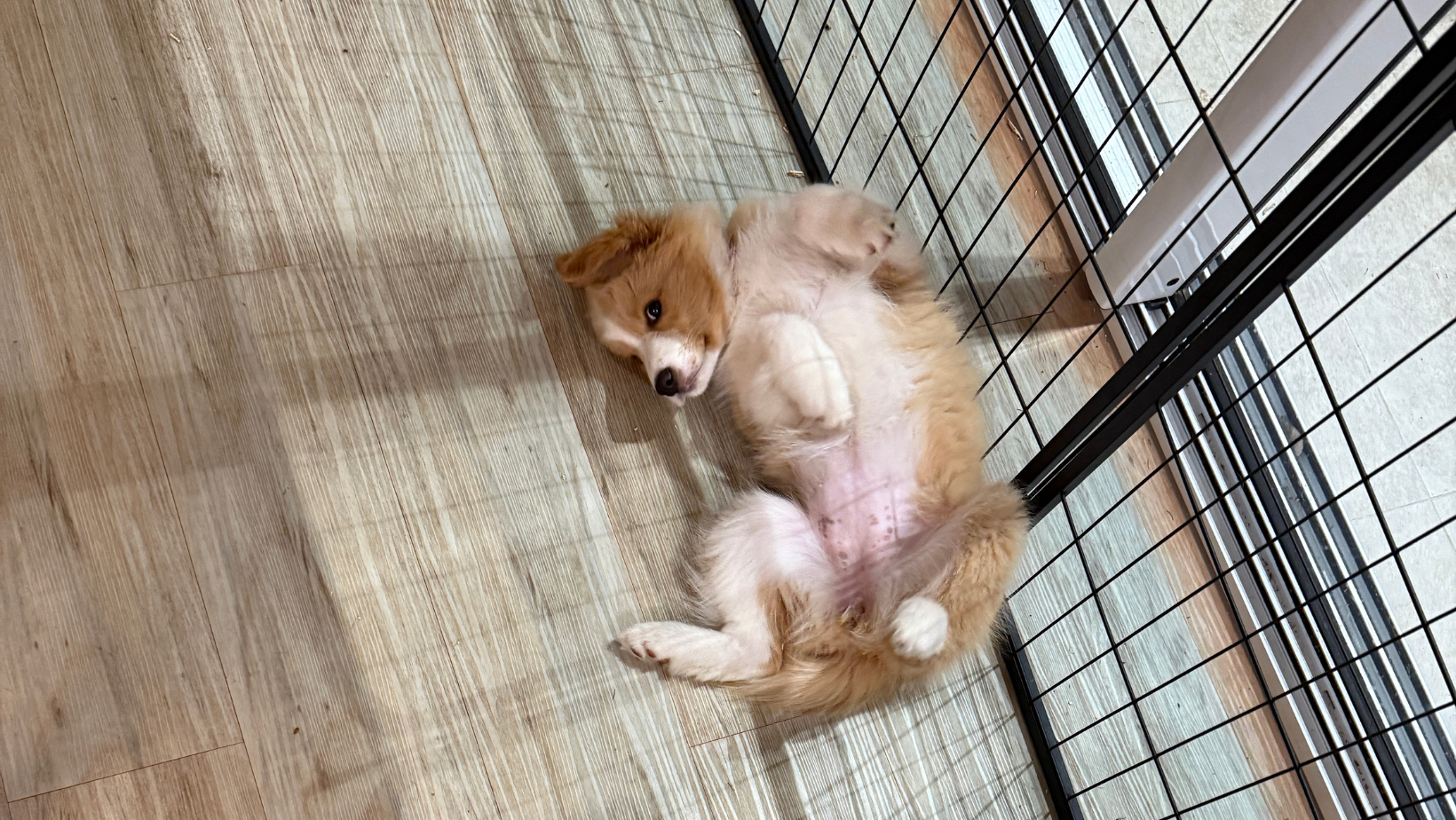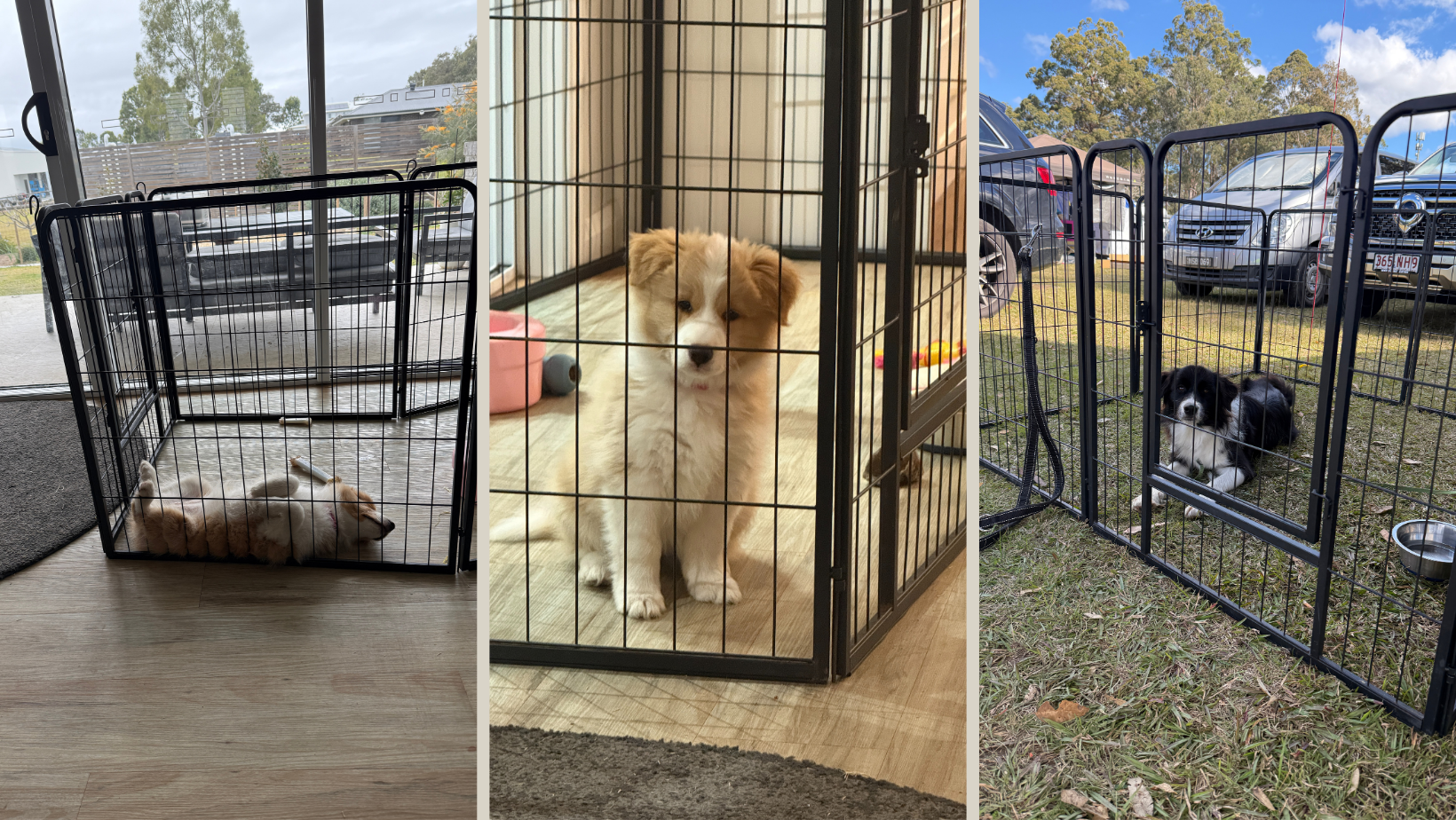It’s been 2 months since we brought Gracie home.
With this being dog number four combined with Taylor’s first season (on heat) and Marshall being our undesexed stud dog, I can’t stress enough how important it is to have good management strategies in place to help keep puppies out of mischief, dogs separated and most importantly, keep everyone safe.
Bringing a new puppy into your home is such an exciting time, but it can also be overwhelming. Even for seasoned dog owners. There have been times it has definitely overwhelmed me!
Puppies are curious, full of energy, and not yet sure of the “rules” of living in your space. Without management strategies in place, they often end up rehearsing unwanted behaviours like chewing furniture, having accidents inside, or bothering your older pets. If left unattended, Gracie would literally crash tackle and hang off Taylor’s face every second of the day! Poor Taylor!
Here are my tried and true management strategies for bringing a puppy home. Whether it’s your first dog, or you’re adding a puppy to your pack, they are SO helpful!
Puppy Gates Inside the House
Think of puppy gates as baby-proofing for dogs. By using gates, you can keep your puppy in safe, easy-to-clean areas while they’re still learning the ropes. Gates make supervision simpler. You always know where your puppy is and they prevent accidents or mischief in unsupervised rooms.
I use them to block off the bedrooms until my puppy is reliably toilet trained and less inclined to chew.
I also use them for training my dogs. I have two gates, so I can effectively divide my home into 3 sections and put dogs in places so I can have one-on-one time with them without another dog interfering.
Playpens
Playpens are lifesavers, especially during busy parts of the day. I have two of them. I can join them together to make one big one or have them in different areas of our property. Usually I have one outside and the other inside (I get mine from Amazon) so I have flexibility.
A playpen in the living room lets my puppy be part of the family without getting underfoot. I can move it near my office so they’re nearby when I’m working. A playpen isn’t cruel. It’s a safe space filled with toys, chews, and a bowl of water.
Puppies learn to settle in these areas, which is a huge help for building calm behaviour. You do need to do some calm training to help them get used to being in the playpen.
In fact, head to Instagram and find our reel on training Gracie to be calm in the play pen to see how I did it! It was our first viral reel!
Crate Training
Crates are one of the most effective tools for helping puppies understand downtime. When introduced positively, a crate becomes a den-like spot where your dog feels safe and secure.
Crate training also makes toilet training so much easier. Some puppies are less likely to toilet in their sleeping space, which encourages them to “hold it” until you take them outside. And if you ever need to travel or your dog has to stay overnight at the vet, they’ll already be comfortable with the setup.
Yard Management and Garden Fencing

I learnt very quickly when we moved into Broadmeadow Park that gardening and dogs don’t mix very well!
I like to set up separate zones in the yard so dogs can enjoy time outside without tearing up my nice grass or digging in the garden beds. Mind you, we have filled in a total of 6 holes in the nice lawn that Gracie has dug because you can’t protect everything!
Simple fencing or portable barriers can protect your landscaping while still giving your puppy room to play. If you have multiple dogs, dividing the space also helps manage energy levels and gives each dog a chance to enjoy outdoor time without being bothered by the puppy.
Why Management Matters
All of these tools – gates, pens, crates, and fencing – have one thing in common: they prevent your puppy from practising behaviours you don’t want. Every time a puppy chews the wrong thing, has an accident indoors, or chases the cat, they’re rehearsing a habit that can be hard to break later on. By using good management strategies, you guide them toward success from the start.
You’ll also find that your household feels calmer. Instead of constantly chasing after your puppy or correcting mistakes, you can relax knowing the environment is working with you, not against you. My family rule is this:
If you get the puppy out of the playpen to have a play, when you’re finished, you must put her back in. And she must be taken outside to toilet at the beginning and end of play!
Let’s just say that with teenagers, this is not fool-proof! However, overall it’s been a wonderful few months, we’re on the tail end of toilet training and have a very lovely puppy who’s confident and happy to be left alone and chill when we go out.
I’ve put together a collection of the gates, playpens, and crates I personally use and recommend. They’ve made a world of difference in keeping my dogs happy and my home peaceful.





